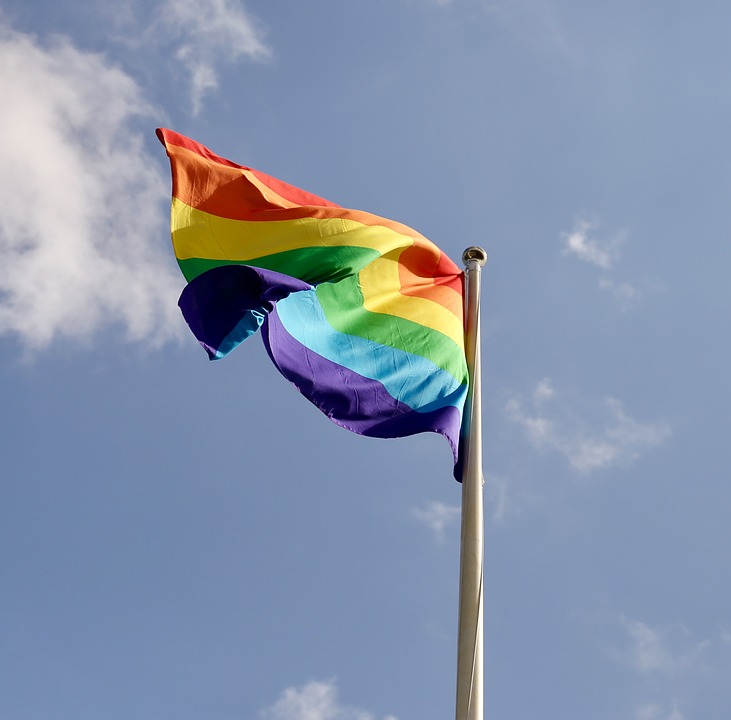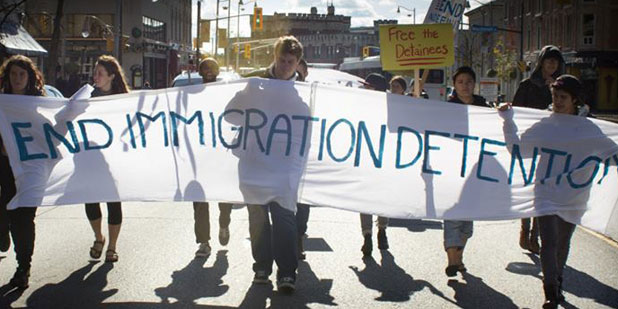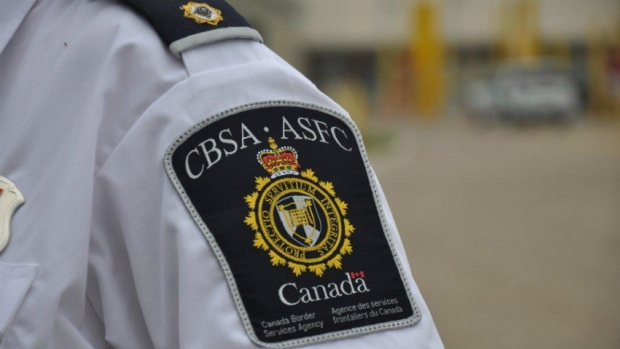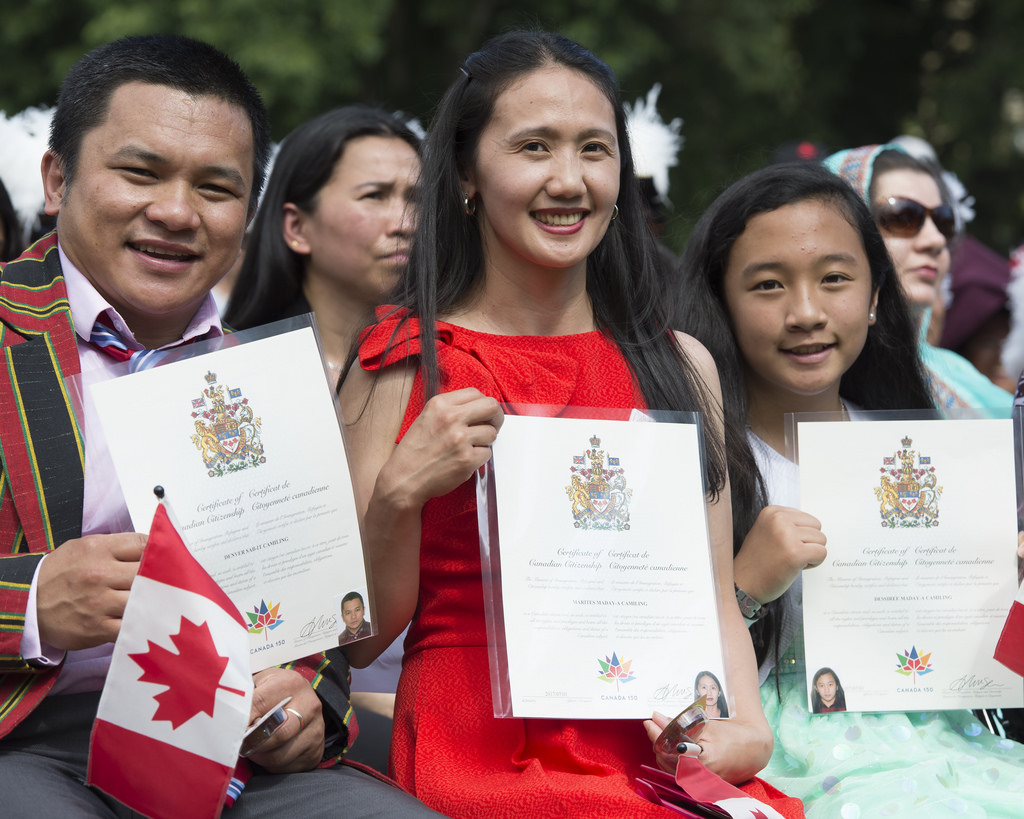New Gender Designation on Canadian Passports
Canadian Citizens Can Now Change Their Gender to “X” On Their Passports
On 24 August 2017, Ahmed Hussen, Minister of Immigration, Refugees and Citizenship Canada, announced that individuals can list their gender as “X” on Canadian passports. The “X” designation indicates an unspecified gender. individual’s gender is unspecified. This change supports LGBTQ2 rights, including gender identity, expression, and sexual orientation. This marks the start of an initiative in Canada to offer this option in all government documents. For more help with Canadian citizenship, contact a citizenship lawyer today.
Official Changes to Passports
Currently, people who wish to change the gender on their passport to “X” will continue to display “M” or “F” on their passport's biodata page (page 2). As of 31 August 2017, Canadian passports may feature observations that state “the sex of the bearer should read as X, indicating that it is unspecified”. This is an interim measure until the sex on the bio page is updated to “X”. According to the application form, applications do not require proof of citizenship or an immigration status document showing an “X” in the sex field.
Joshua M. Ferguson is one individual excited for the change. Ferguson applied to change their passport gender designation at around 2 pm on August 31, 2017. They are among the first individuals to do so and may be the first Canadian with the designation. Ferguson told Metro Vancouver, “I feel great! It’s monumental: the first time that people like me across the country can be formally recognized as non-binary.”
Advocates have also applauded the change. Yet the “X” marker is not accepted around the world.
Continued Challenges
Travellers may face travel restrictions in or through other countries. The application form requires applicants acknowledge that Immigration, Refugees and Citizenship Canada “cannot guarantee that a travel document with an observation showing an 'X' will be accepted for entry or transit by border control authorities of another country.”
In order to apply for the designation, the form requires applicants acknowledge that Immigration, Refugees and Citizenship Canada “cannot guarantee that a travel document with an observation showing an ‘X’ will be accepted for entry or transit by border control authorities of another country.”
Removing Gender Altogether?
Helen Kennedy, executive director of Egale Canada Human Rights Trust, a national charity promoting LGBTQ2 rights, has advocated removing the sex designation from passports altogether. Kennedy told The Guardian, “In order to successfully increase the safety of non-binary, intersex and trans folks, Canada needs to more work to lobby internationally to remove gender markers on passports, as well as break down existing barriers that are preventing access to gender autonomy in our country.”
In the meantime, the United Nations’ International Civil Aviation Organization, which sets guidelines on international passports, requires a sex field on all travel documents.
Canada joins at least eight other countries who offer a third option on their passports or national identification documents, including Australia, Bangladesh, Germany, India, Malta, Nepal, New Zealand, Pakistan, Ireland, and Denmark. Washington D.C. and Oregon in the United States of America have also implemented similar measures with respect to driver’s licenses. This step forwards demonstrates Canada’s welcoming approach to people from all countries, walks of life, and points of origin.
Can Canada Offset the Shortcomings of U.S. Immigration Policies?
UN Committee Asks If Canada Can Lead with Progressive Legislation in Light of US Anti-Immigration Views
Whether it's fair or not, Canada’s global reputation often draws comparisons and contrasts to our neighbours in the United States. While Canada continues to work towards inclusive policies and attitudes, which are lately often at odds with those of our southern neighbour, a lot of work remains to be done on our side of the border. Despite general goodwill for newcomers to Canada, and refugee law offices which promote acceptance and work at helping those who need it find safety and a new home, numerous challenges and issues remain.
Even with an immigration-friendly government, discrimination and prejudice still exist. Further, Canada’s own history of colonization and systemic racism, which persists to this day, requires extensive change.
UN Reviewing Racial Discrimination in Canada
The United Nations (UN) Committee on the Elimination of Racial Discrimination (CERD) reviews Canada’s record of racial discrimination and compliance with the UN Human Rights Treaty every five years. Earlier this month, the Canadian delegation faced two days of questioning by the UN Committee in Geneva. Pressing topics included:
- Violence against Indigenous women;
- The over-representation of minority groups (especially Indigenous people) in Canadian prisons; and
- The exploitation of migrant seasonal workers with no pathway to permanent residency in Canada.
The UN committee asked Canadian delegates how the country plans to rectify these issues. Gay McDougall, the US member of the committee, pressed further and asked, in light of current anti-immigration policies and racial discrimination in the US, if Canada is able to separate itself, move forward, and lead the way with more progressive legislation to eliminate systemic racism. It is a good question.
Opportunity for Canada
Canada still has a long way to go to rectify the racial discrimination present in our country. That being said, we do have a chance to move forward. It is important that Prime Minister Trudeau listen to the UN and meet Canada’s obligations to eliminate the systemic racism (especially against Indigenous peoples) that continues to hold Canada back from being the truly progressive nation we are capable of being.
If Canada wants to truly differentiate itself from the US, especially at this time when discrimination, hate, and anti-immigration sentiments are at the forefront of current events, then it needs to lead the way with progressive legislation moving forward.
Who’s to Blame: The Letter of the Law or its Application?
Indefinite Immigration Detention Upheld by Federal Court
In late July, the Federal Court of Canada released its judgement Brown v Canada (Ministers of Citizenship and Immigration and Public Safety and Emergency Preparedness), 2017 FC 710 (Brown). This decision is another entry in an ongoing debate about the legality of potentially indefinite immigration detention.
In sum, Federal Court Justice Fothergill found that the immigration detention regime is constitutional, and that any shortcomings in the system are due to the policy being mismanaged. This decision was based on his assessment that the immigration regime has a quasi-judicial review process which provides a mechanism for an oral hearing by an impartial decision-maker and allows the detainee to both know and respond to the case against her/him. Advocates for detainees were disappointed, but not surprised. The Federal Court has been insisting for years that due to the specific and multifaceted considerations that go into each immigration detention decision, especially when issues of identity or security are involved, that continued detention is justified. However, many are becoming disheartened at a process that - while it may be constitutional to the hard letter of the law - is often flagrantly abused.
To further continue the discussion, the Federal Court has certified a question to a higher court asking whether the Constitution requires there be a maximum amount of time for an individual to be detained for immigration purposes. This question both compliments and expands on the certified question put forward in 2016’s Lunyamila (2016 FC 1199) decision, which asked whether continued detention can be justified in circumstances where an individual’s lack of cooperation is the reason for their detention, even where it appears that the detention may indeed become indeterminate.
Both questions are still awaiting an answer.
Overview of Immigration Detention Regime
The immigration detention regime is statutorily empowered by the Immigration and Refugee Protection Act and enforced by the Canada Border Services Agency (CBSA). This regime permits foreign nationals and Canadian permanent residents to be detained if CBSA has reasonable grounds to believe that the person is unlikely to appear for an examination, hearing or removal or is a danger to the public; or reasonable grounds to suspect that the person is inadmissible for security reasons, or for violating human or international rights, serious criminality, criminality or organised criminality. Furthermore, individuals may also be detained if immigration and/or CBSA officers are not satisfied that a foreign national has established her or his identity.
These provisions also apply to children, who may also be detained if their identity cannot be established, CBSA considers them a flight risk, or if their parents are detained (where they are considered ‘guests’).
When CBSA detains someone, the Immigration Division (ID) of the Immigration and Refugee Board of Canada must hold a ‘detention review’ within the first 48 hours of their detention. If detention is found to be justified, a second hearing must be held within 7 days of the first, and then every 30 days thereafter. These reviews are adversarial: an ID adjudicator hears arguments both from the Crown (oftentimes represented by Hearing Officers) and from the detained individual, and determines whether the individual should go free or continue their detention. Subsequent detention reviews must defer to prior detention reviews unless there are “clear and compelling reasons” for them to depart.
Some Problems with this Regime
Lack of Specialized Holding Facilities
While some metropolitan areas have separate immigration detention facilities, many individuals are actually detained in provincial prisons. This is because the number of foreign nationals and Canadian permanent residents detained by CBSA every year is much greater than the number of spaces available in these specialized facilities. As such, some detainees may even find themselves in maximum security prisons alongside dangerous offenders. However, unlike these offenders, no independent decision-maker has found them guilty beyond a reasonable doubt: as indicated earlier, mere suspicion is enough to hold individuals for immigration detention purposes.
CBSA has recently announced a public-private contract with the Canadian Red Cross to ensure continued monitoring of immigration detention facilities. However, many advocates argue that this is not enough: Barbara Jackman, a Toronto-based immigration lawyer, remarked that, “I don’t see how this will change anything. It is using the Red Cross, because it is a known humanitarian organization, to make the CBSA look better without doing anything. It is not an improvement, much less a solution.”
No Time Limits
Unlike our allies, where foreign nationals may only be detained for immigration purposes up to a maximum of 60 days (Mexico), 6 months (US), or even 18 months (EU), Canada has no such limit. While many immigration detainees gain their freedom within a few weeks or months, some individuals – often those who have been issued danger opinions – have languished in Canadian prisons for years. For example, Alvin Brown - the plaintiff in the most recent case - was imprisoned for over 5 years before finally being deported to his country of origin. The longest immigration detention victim, Mr. Kashif Ali, was released earlier in July after seven years of immigration detention in a maximum-security jail after Ontario Superior Court Justice Nordheimer granted his habeus corpus application.
Reverse Onus
Unlike the criminal justice system, where it is the Crown who must prove the accused’s guilt beyond a reasonable doubt, the immigration detention regime has switched the onus (or who must prove what) from the Crown to the detainee. As a result, instead of the Crown having to undoubtedly justify continued detention, the detainee must instead demonstrate that they deserve to be released, and/or that release conditions will sufficiently overcome the reason they were detained in the first place.
Three considerations further exacerbate this burden: Crown arguments are generally taken as fact and are not required to be proven or justified. Disclosure is often not provided to detainees, so they oftentimes don’t know what information the Crown is relying on to come to its conclusion and therefore cannot effectively rebut. Finally, subsequent detention reviews, while not bound by previous decisions, must nevertheless take these considerations into account. If each previous concern is not specifically addressed, subsequently issued release orders can be appealed. In this scenario, the Crown would likely file for a stay of the release order, meaning that the individual would remain detained throughout the appeal process.
Oftentimes, even if the appeal is denied, the appeal decision-maker considers the previous release order a moot point as a new detention review already has or will shortly take place. As a result, there is a possibility of individuals remaining detained even if a valid release order has been issued, as the detainee becomes caught in the release-appeal-stay of release cycle.
Brown Upholds the Regime’s Constitutionality
Brown directly challenged the constitutionality of the immigration detention system, arguing that it permits indefinite detention and that indefinite detention violates Sections 7 (right to life, liberty, and security of the person) and 9 (right to not be arbitrarily detained) of the Canadian Charter of Rights and Freedoms. Brown’s counsel advanced four arguments in support of this:
I. Detention Reviews impose a “reverse onus” on a detainee to justify release, rather than placing the onus on the Minister to justify continued detention;
II. The detainee is not given a reasonable opportunity to know the case to be met or to respond to that case;
III. The ID has no power to control conditions of detention; and
IV. The ID has no obligation to fashion alternatives to detention.
Federal Court Justice Fothergill, however, disagreed, arguing that “[p]roperly interpreted and applied, these provisions of the IRPA [A57-58] and the Regulations [R244-248] comply with the Charter.” He began this assessment by drawing the following principles from the SCC decision Charkaoui (2007 SCC 9):
a) Challenges to the fairness of the process leading to possible deportation and the loss of liberty associated with detention raise important issues of liberty and security, and s 7 of the Charter is engaged (at para 18).
b) Section 7 of the Charter requires not a particular type of process, but a fair process having regard to the nature of the proceedings and the interests at stake (at para 20).
c) Before the state can detain people for significant periods of time, it must accord them a fair process (at para 28). This basic principle has a number of facets. It comprises the right to a hearing. It requires that the hearing be before an independent and impartial decision-maker. It demands a decision on the facts and the law. It entails the right to know the case put against one, and the right to answer that case. Precisely how these requirements are met will vary with the context, but for s 7 to be satisfied, each of them must be met in substance (at para 29)
d) Detention is not arbitrary where there are standards that are rationally related to the purpose of the power of detention (at para 89). Whether through habeas corpus or statutory mechanisms, foreign nationals, like others, have a right to prompt review to ensure that their detention complies with the law (at para 90).
He then used this framework to rebut each of Mr. Brown’s arguments:
I. Justice Fothergill agreed with the Court in Thanabalasingham (2004 FCA 4) that the ID should be able to defer to/rely on previous decisions when making future ones, so long as there are not “clear and compelling reasons” for them not to do so. This is because the Minister’s initial justification for detention remains valid until a new adjudicator determines otherwise. Subsequent ID adjudicators are then empowered to demonstrate why the Minister’s previous justifications are no longer valid in clear and compelling terms. As per Thanabalasingham, to do so often (but not always) requires an ID adjudicator to assess new evidence and/or new arguments. However, because the subsequent ID adjudicators have the power to assess new evidence and contradict previous assessments, a review mechanism is said to exist, thereby making the regime constitutional. Justice Fothergill found that “[i]f the ID does not respect these standards in practice [namely requiring more than merely ‘clear and compelling arguments’], this is a problem of maladministration, not an indication that the statutory scheme is itself unconstitutional.”
II. While agreeing that there are legitimate concerns about the timeliness and quality of pre-hearing disclosures, Justice Fothergill once again attributed this to maladministration rather than statutory unconstitutionality. He recommended that inadequate disclosure could be addressed by asking for brief adjournments to permit counsel to review documents brought to the hearing; to request that future review dates be brought forward; and that in egregious cases expedited judicial review applications may be filed.
III. Justice Fothergill determined that it is not unconstitutional that the ID has no jurisdiction over the location and conditions of detention, so long as they consider the availability, effectiveness, and appropriateness of alternatives to detention during the detention review. If a detainee wishes to challenge the location and/or conditions of their detention, this could be done in other venues against CBSA.
IV. While the ID has a positive obligation to consider alternatives to detention, this obligation is only engaged after the Crown has made a prima facie case for detention. As such, alternatives to detention are not required to be considered as a stand-alone concept: they must always be weighed against detention.
Brown also argued that not having a maximum cap for immigration detention is unconstitutional. He advocated for a 6-month cap for immigration purposes, and an 18-month cap for removal orders. However, Justice Fothergill found that because “the question of when detention for immigration purposes is no longer reasonable does not have a single, simple answer...” and that because IRPA includes a (what he determines to be) effective review mechanism, that the fact that there is no maximum time cap is not, in fact, unconstitutional.
Finally, Brown argued that his and other detainees’ section 12 rights (the right to not be subjected to cruel and unusual punishment) were breached due to the length, indeterminacy, and conditions of imprisonment. To support this argument, his counsel advanced numerous studies and witnesses which demonstrated the prevalence of immigration detainees being held in solitary confinement; that indeterminate detention has a negative psychological effect on detainees; and that health care may be inadequate. However, Justice Fothergill rejected this argument outright, once again citing the ability of the detention review mechanism to alleviate all concerns. Nevertheless, he certified this question for the Federal Court of Appeal to answer:
What Factors Are Considered in Upholding Indefinite Detention?
While Brown is the latest Federal Court case to uphold the regime, the Federal Court has struggled with the concept of indefinite detention for years. In 2015-2016 alone, 17 other cases were heard at the Federal Court on this topic, and numerous others at the provincial level. While Federal Court judges agree with the relevant factors which apply to detention reviews, individual judges have weighed each factor differently:
| Detained Based On? | Danger Opinion? | Length of Detention | What Factors Should Be Given Equal Weight? | What Factors Should Be Given Extra Weight? | What Classified as (Non) Cooperation? | Other Notes | |
|
Wang 2015 FC 79 |
Misrep. | No | 2014-2015 | All inadmissibility hearings should consider all relevant immigration proceedings | Criminals and Security Threats given more weight to continued detention. Refugee claims given more weight to release. | N/A | Claim began as Express Entry claim, but after being detained claimants filed refugee claim. |
|
Okwerom 2015 FC 433 |
Danger to the public, flight risk | N/A | N/A | Indeterminate detention one factor among many | N/A | ||
|
Wang 2015 FC 720 |
Misrep. | No | 2014-2015 | Impending refugee hearings considered a factor when determining flight risk. | N/A | ||
|
Ahmed 2015 FC 792 |
Danger to the public, flight risk | Yes | 2013-2014 | When determining indefinite nature of detention, can only assess facts as they currently exist; cannot rely on anticipation of future processes if they are not already occurring. | |||
|
Ahmed 2015 FC 876 |
Danger to the public, flight risk | Yes | 2013-2015 | Indeterminate nature of detention one factor among many | When indefinite detention found, higher responsibility to look for alternatives to detention, specifically release conditions. | ||
|
Warssama 2015 FC 1311 |
Flight risk, failure to cooperate | No | 2010-2015 | 57 months detention unreasonable given that alternatives to detention existed | Length of detention trumps all. | Refusing to sign release documents required by airline not considered to be non-cooperation | |
|
Shariff 2016 FC 640 |
Danger to the public, flight risk | Yes | 2011-2016 | Length of detention weighed more than lack of cooperation | Length of detention trumps. | Refusing to sign release documents required by airline considered non-cooperation | |
|
Rooney 2016 FC 1097 |
Identity | No | 2013-2016 | Length of detention weighed heavily when its unlikely that identity will be established. | IRPA does not require new evidence at detention reviews, just reasons why to change verdict. Once claimant cooperates, Minister has positive obligation to prove identity | ||
|
Lunyamila 2016 FC 1199 |
Danger to public, flight risk | Yes | 2013-2016 | Indeterminate nature of detention, danger posed, flight risk posed, level of cooperation & its impacts on delay, available alternatives to detention which mitigate day-to-day dangers, | Continued detention is justified where: 1. Detention arises from individual’s refusal to cooperate;2. Lack of cooperation impedes any steps that may realistically contribute in a meaningful way to effecting individual’s removal; AND3. Where individual has been designated as a danger to the public OR are subject to a validly-issued removal order and are deemed a flight risk.
Risk to public danger given considerable weight. Must be restrained by pre-established conditions which mitigate the ‘day to day’ dangers posed |
Refusing to sign release documents required by airline; and failing to reach out to country of origin to help coordinate return, considered non-cooperation. | Once the Minister establishes a prima facie case for continued detention based on the uncontested danger to the public and flight risk posed by the applicant, the onus then shifts to the applicant to establish grounds for release. Minister entitled to exhaust likely leads before pursuing alternatives. |
|
Ali 2016 FC 1406 |
Danger to the public, flight risk | Yes | ~1.5 years over a 5-year period | Danger posed to public, flight risk, (lack of) cooperation, conditions which ensure day-to-day risk mitigation | Danger posed to the public outweighs individual liberty to refuse to sign travel document | Refusing to sign airline-required travel documents seen as noncooperation |
* Green signifies good law, whereas red signifies overturned law. Please note that Canada (Sécurité publique et Protection civile) c Chipovalov, 2017 CF 623. is not included in this chart.
So Where Do Things Stand?
Brown and the End Immigration Detention Now Network intend to appeal the Brown decision. Two certified questions: one of general import on maximum timelines, the other applicable solely to indefinite detention for those who “don’t cooperate” have been put forth, although neither have been answered. The Government continues to host open consultations to examine public opinion on immigration detention.
If you are currently in immigration detention, or at risk of being detained, please contact a Canadian immigration lawyer today.
Judge Criticizes Canada’s Immigration Detention System
Detainee Released as Judge Offers Scathing Criticism of Immigration Detention System
While indefinite immigration detention has recently been found not to violate the Canadian Charter of Rights and Freedoms by the Federal Court of Canada, many immigration and refugee lawyers and legal professionals are still criticizing the system. Indefinite detainment is an unfair practice that needs to be reformed, especially in cases when detainees are held without any criminal charge or offence.
A recent court decision by Justice Edward Morgan of the Ontario Superior Court has called for a much-needed change in the immigration system. In his decision dated August 14, 2017, Justice Morgan ordered the immediate release of Ricardo Scotland—a single father and refugee claimant—who had been detained for a total of 18 months in a maximum security prison, despite having no criminal charges or convictions. Over the last two years, the Canada Border Services Agency (CBSA) detained Scotland for four alleged breaches of his conditions that are in place while he awaits his refugee claim decision. Based on these alleged breaches the CBSA deemed Scotland to be a flight risk, which is a ground for detention. However, the entirety of the alleged breaches were either withdrawn or found to be innocent mistakes.
Despite the fact that these breaches were found to be invalid reasons for detainment, both the CBSA and the Immigration and Refugee Board (IRB) remained firm in their decision to detain Scotland. The immigration authorities made errors, yet these errors continued to influence their decisions to detain Scotland indefinitely.
Justice Morgan notably compared Scotland’s treatment to that of the main character in Franz Kafka’s The Trial, a story about a man who is imprisoned for no known reason. His criticism of the IRB—the decision-makers who conduct monthly reviews of immigration detainees—points out that the IRB accepts the CBSA’s accusations without evidence, ultimately allowing the CBSA to make the final decision. He also found that it is almost impossible for detainees to successfully argue their cases when the IRB is unwilling to depart from previous decisions, even if these decisions are found to be based on inaccurate information.
Justice Morgan’s ruling has been acknowledged by the IRB. Just days after his criticism, the IRB announced that it would conduct an independent audit of its indefinite immigration detention system. These decisions determine the fate of those who may be imprisoned over a prolonged period; it is critical that they are made with transparency. Hopefully this realization will mean that the IRB will work to implement broad changes to their detention review system. Listening to Justice Morgan’s judgement, along with what immigration detainees, activists and immigration lawyers have been saying for a long time is a great place to start.
If you are in need of more information about the immigration system in Canada, the best course of action is to contact an immigration and refugee lawyer.
New Canadian Citizenship Regulations
Contact Your Citizenship Lawyer About the Recent Changes to The Canada Citizenship Act
In 2014, the previous Conservative government passed Bill C-24, a controversial Canadian citizenship law that created many barriers for applicants. Among other problems, this citizenship law had lengthy residency requirements and unfair citizenship revocation rules that violated Canadian Charter rights. Now, thankfully, the Canadian government’s view on citizenship is to treat all Canadian citizens equally, whether they were born in Canada or not.
The government recently passed Bill C-6, a new citizenship law that made amendments to the Canada Citizenship Act. This bill repeals certain changes made by the former Conservative government in 2014. Some of the most important changes involve children’s rights, citizenship revocation, physical presence, and language requirements. For more information on the changes to the Canada Citizenship Act and help with the application process, contact a citizenship lawyer.
With this new law, the federal government no longer has the power to automatically revoke citizenship from dual citizens accused of a national security offence. Also, the government can no longer revoke the citizenship of individuals accused of giving fraudulent information on their citizenship application without a hearing. The federal government cited concerns that such authority violated the Canadian Bill of Rights.
The Canadian government recently published these new regulations to ratify the changes to the Canada Citizenship Act. Some of the new changes to the Citizenship Act with Bill C-6 amendments, and the timeframe for introducing these changes, are as follows:
In Effect as of June 19, 2017
- The Canadian government can no longer revoke Canadian citizenship from dual citizens convicted of treason, spying, terrorism charges (depending on the sentence received), or who took part in an armed force or organized group in a country engaged in conflict with Canada. Now, those convicted and living in Canada will face the Canadian justice system, like any other Canadian citizen.
- Citizenship applicants no longer need to intend to remain in Canada upon receiving citizenship. This flexibility to work and live elsewhere is now a freedom for all Canadian citizens, whether they are born in Canada or not.
Pending Changes for Fall 2017
- Citizenship applicants must be physically present in Canada for three out of five years before applying—changed from the previous four out of six years.
- If required to do so, applicants must also file Canadian income taxes for three out of five years before applying.
- Each day an applicant was physically present in Canada before becoming a permanent resident (either as a temporary resident or protected person) can now be counted as a half-day toward meeting the physical presence requirement, up to 365 days. Prior to this change, applicants could not count any time spent in Canada before they become a permanent resident.
- Applicants between 18 and 54 years—previously 14 and 64 years—must meet the knowledge and language requirements for citizenship.
Changes in Early 2018
- The Federal Court is the decision-maker in all citizenship revocation cases—unless the citizen asks for the Minister to make the decision.
- Citizenship Officers will have the authority to seize fraudulent or suspected fraudulent documents.
These new changes will make it easier for applicants to get a chance at gaining Canadian citizenship. And in the eyes of the citizenship law, the government must treat all Canadians equally. It is no longer acceptable to see so many as second-class citizens. For more information and help with the application process, contact a citizenship lawyer.





